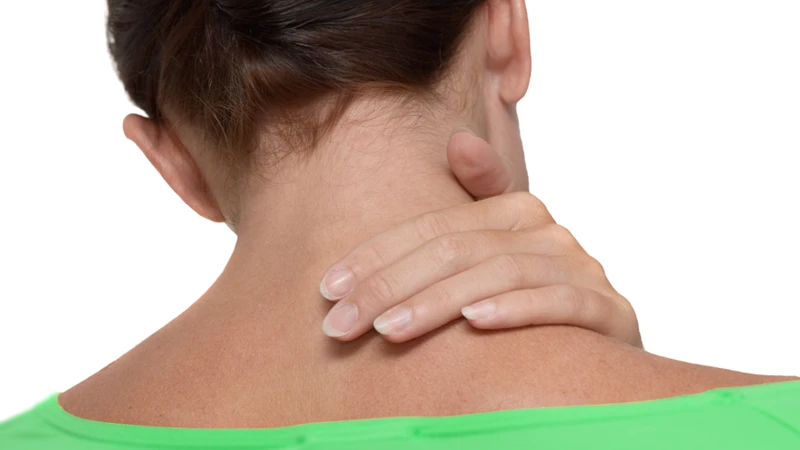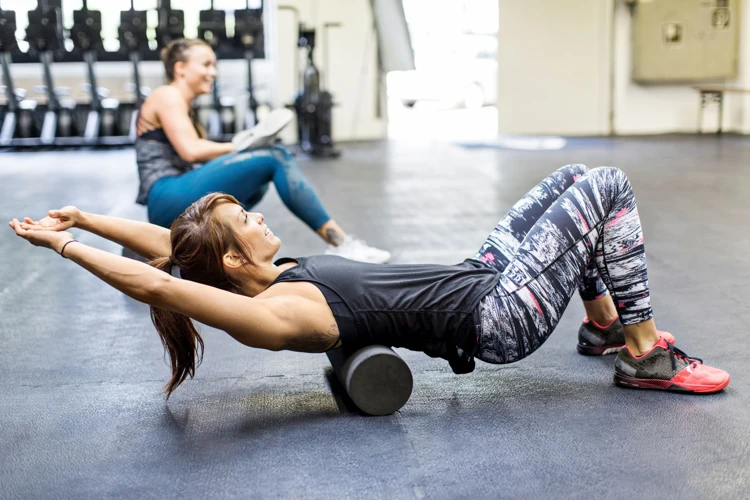Do you suffer from muscle tension or back pain? Do you want to learn how to massage your own back at home? Massaging your own back can be a great way to relieve tension and pain without having to seek out an expensive massage therapist. In this article, we will discuss simple techniques you can use to massage your own back at home. We will explain the benefits of self-massage and provide step-by-step instructions on how to massage your back safely and effectively.
Contents
Benefits of Self-Massage

- Relaxation: Self-massage can be an effective tool to relax the body and reduce stress.
- Pain relief: Massage can help reduce muscle tightness and pain, especially in the back.
- Improved circulation: Self-massage can help improve circulation, which may help reduce inflammation and improve overall health.
- Reduced anxiety: Self-massage can help reduce anxiety and help you feel more relaxed and in control.
- Better sleep: Self-massage can help reduce stress and tension and improve quality of sleep.
- Improved flexibility: Massage can help loosen tight muscles, improve range of motion, and improve posture.
Self-massage is an effective way to take care of your body and health. By following simple techniques on how to massage your body yourself, you can enjoy the many benefits of self-massage. From improved circulation and reduced anxiety to better sleep and improved flexibility, self-massage is an excellent way to relax and take care of yourself.
Preparation for Self-Massage

Choose an Appropriate Place
When it comes to self-massage, the first thing you should consider is finding a comfortable and quiet place where you won’t be disturbed. Make sure you have enough space to move around and lie down.
Choose the Right Clothing
Wearing comfortable and loose-fitting clothing is key for a successful self-massage. Avoid wearing anything that will restrict your movement or make you feel uncomfortable.
Have the Right Tools/Equipment
To ensure a successful self-massage, have the right tools and equipment. This can include massage oil, a foam roller, massage balls, or a massager. Also, make sure to have a towel and pillow nearby for extra comfort.
Keep in mind that self-massage can be a great way to relax and relieve tension in your back. With some simple preparation and the right tools, you can enjoy a relaxing massage in the comfort of your own home!
Techniques for Self-Massage

Swedish Massage Technique
Swedish massage is the most common and best-known type of massage. It involves long, fluid strokes of muscles and tissues with pressure that varies from light to medium to firm. This technique can be used for relaxation, to relieve muscular tension, or to improve blood circulation.
Deep Tissue Massage Technique
Deep tissue massage is used to target deeper layers of muscle and connective tissue. This technique applies more pressure and works on the deeper layers of muscles. It is used to break up scar tissue, release tension, and improve mobility.
Trigger Point Therapy Technique
Trigger point therapy is used to release muscular tension in certain areas of the body. This technique involves applying pressure to “trigger points” that are located in tight muscles. The pressure is held for a short period of time and released.
Shiatsu Massage Technique
Shiatsu massage is an ancient Japanese technique that uses finger pressure to massage various points of the body. This technique is used to stimulate energy flow, restore balance, and promote relaxation.
Reflexology Technique
Reflexology is a technique that focuses on specific pressure points within the hands, feet, and ears that correspond to different body organs and systems. This technique is used to promote relaxation, improve circulation, and improve overall health.
By using these techniques, you can learn how to do self body massage to relieve tension and promote relaxation in the comfort of your own home.
General Tips for Self-Massage

Keep it comfortable: When self-massaging, it is important to make sure that you are comfortable. Choose a position that is comfortable and helps you reach the areas you want to massage.
Be gentle: Massage is meant to be relaxing, so it should be done with a light pressure. If you are using too much pressure, it can cause more harm than good.
Move in circles: When massaging, move your hands in circles. This helps to loosen tight muscles and improve circulation.
Be consistent: Self-massage should be done regularly in order to get the most benefit. It is best to massage a few times a week in order to keep your body relaxed and healthy.
Use oil: Using oil or lotion can help make the massage more comfortable and enjoyable. It can also help the hands move smoother over the skin.
Focus on one area: When self-massaging, it is best to focus on one area at a time. This will help you to better target and massage the area.
Stop if it hurts: If you experience any pain or discomfort during the massage, it is best to stop and take a break. Massage should never cause pain or discomfort.
Safety Considerations for Self-Massage

Adequate Warm-Up: It is important to warm-up before performing self-massage. Cold muscles are more prone to injury. Prior to self-massage, it is important to perform light stretching and muscle preparation exercises.
Appropriate Pressure: It is important to apply appropriate pressure during self-massage. Too much pressure can cause injury, while too little pressure will not provide the desired therapeutic benefits. It is important to adjust the pressure to the individual’s tolerance level.
Avoid Injury: It is important to avoid massaging any areas that are injured, inflamed, or swollen. If an area is too painful, it is best to avoid massaging it. It is also important to avoid any sudden or forceful movements.
Be Aware of Contraindications: Massage therapy may not be appropriate for certain conditions. It is important to be aware of any contraindications before beginning a self-massage.
Avoid Unsafe Areas: It is important to avoid massaging any areas that are unsafe, such as the spine, neck, and head.
Be Aware of Your Limits: It is important to be aware of your own physical limitations. If you experience any pain or discomfort, it is best to stop the self-massage and seek medical advice.
Use Appropriate Tools: It is important to use the appropriate tools and techniques for your self-massage. Massage balls, foam rollers, and massage sticks can be used to provide extra pressure or support during the massage. It is also important to use the correct techniques when using any massage tools.
Seek Professional Help: If you are unsure of how to perform self-massage, it is best to seek professional help. A massage therapist can provide guidance and assistance with performing self-massage.
When to Seek Professional Help for Self-Massage
- When Pain Persists: If you are experiencing pain that persists for more than a few days, it is best to seek professional help. A professional massage therapist can provide a more accurate diagnosis and better treatment.
- When You Need Deeper Work: If you need a deeper massage and do not have the necessary equipment or the skill to do it yourself, it is best to seek professional help. Professional massage therapists are trained to use the correct techniques to reach deeper tissues and provide relief.
- When You Have an Injury: If you have an injury, it is best to seek professional help. A professional massage therapist can assess the condition of the injury and provide the most beneficial treatment.
- When You Have a Chronic Condition: If you have a chronic condition such as fibromyalgia, it is best to seek professional help. A professional massage therapist can provide the best treatment to help alleviate the pain and discomfort associated with chronic conditions.
- When You Are Pregnant: If you are pregnant, it is best to seek professional help. Professional massage therapists are trained to provide safe and beneficial massage techniques for pregnant women.
Frequently Asked Questions
What Kind of Massage Techniques Can I Use on My Own Back?
Self-massage is a great way to relax muscles and reduce tension. There are a variety of massage techniques you can use on your own back, such as kneading, tapping, circular motions, and rubbing. Kneading is a gentle, rhythmic massage technique that helps to relax muscles, while tapping involves using your fingers to lightly tap the back. Circular motions help to reduce tension and increase circulation, while rubbing is a more intense massage technique that helps to loosen tight muscles. Experiment with different techniques to find the most comfortable and effective massage for your own body.
How Often Should I Massage My Back?
Massaging your own back regularly can help improve flexibility and reduce muscle tension. It is recommended to massage your back at least once a week. However, depending on your lifestyle, muscle tension, and level of physical activity, you may need to massage more often. If you experience chronic back pain, you may benefit from daily massage. It is important to understand your body’s needs and adjust your massage frequency accordingly.
What Kind of Equipment Do I Need for a Back Massage?
You don’t need a lot of equipment to massage your own back at home. A few basic items are enough. You will need a comfortable surface to lie on, such as a bed or couch, and a towel to put under your body. You will also need some massage oil or cream and a firm massage tool, such as a tennis ball, a foam roller, or a massage stick. Rubbing the massage tool on your back will help loosen tight muscles and ease tension.
Are there any safety precautions I should take before massaging my back?
Yes, there are several safety precautions that you should take into consideration before massaging your back at home.
- Warm up your muscles and joints with light stretching before you begin the massage.
- Check your back for any tender areas or areas of inflammation, and avoid massaging those areas.
- Make sure you have a comfortable and stable surface to massage your back on.
- Choose the right massage oil and do a patch test on a small area of your skin before applying it to your back.
- Start with light strokes and gradually increase the pressure as you proceed.
- Stop immediately if you experience any pain or discomfort.
- Drink plenty of water before and after the massage to help flush out toxins.
By following these safety precautions, you can ensure that your massage session is a safe and enjoyable one.
What are the Benefits of Giving Myself a Back Massage?
- Relieves Stress and Tension: Self-massage helps to reduce stress and tension in the body by releasing endorphins, which are responsible for feelings of relaxation and happiness.
- Improves Circulation and Blood Flow: Massaging your own back increases the flow of blood to the muscles, which improves circulation and helps to reduce pain and fatigue.
- Helps with Muscle Recovery: Self-massage can help to speed up the recovery of sore, strained, and aching muscles by increasing blood flow and reducing lactic acid build-up.
- Reduces Tension Headaches: A self-massage can help to reduce tension headaches by relaxing the muscles in the neck and shoulders.
- Improves Flexibility: Regular massage can help to improve flexibility and range of motion in the back and spine.
- Improves Mental Health: Self-massage has been found to help reduce anxiety and depression, and improve overall mental well-being.
Conclusion
Self-massage is a great way to relieve back pain, improve mobility, and reduce stress. By following the simple techniques outlined in this article, you can easily massage your own back at home and experience the benefits of massage. Self-massage can be done daily or as needed, but be sure to take it slow and listen to your body to avoid any potential problems.

